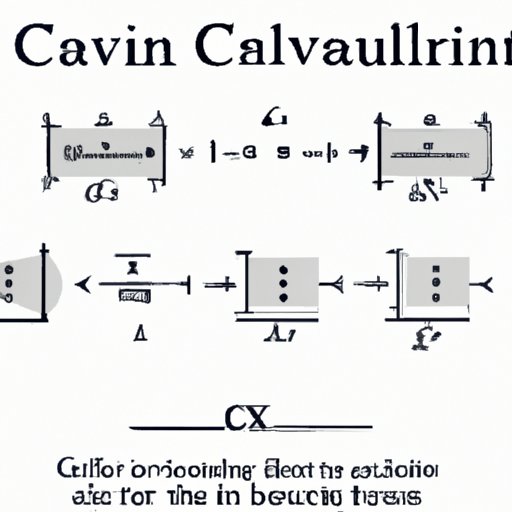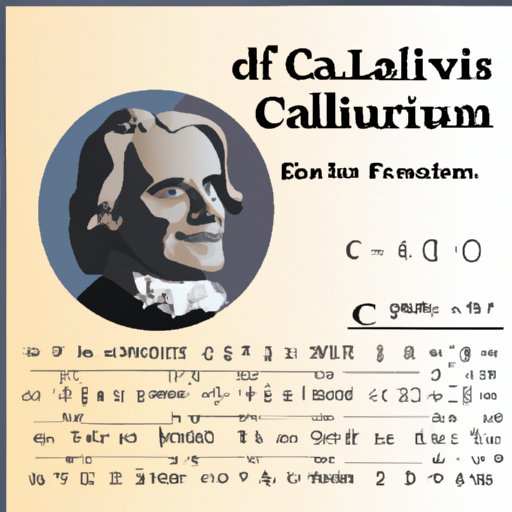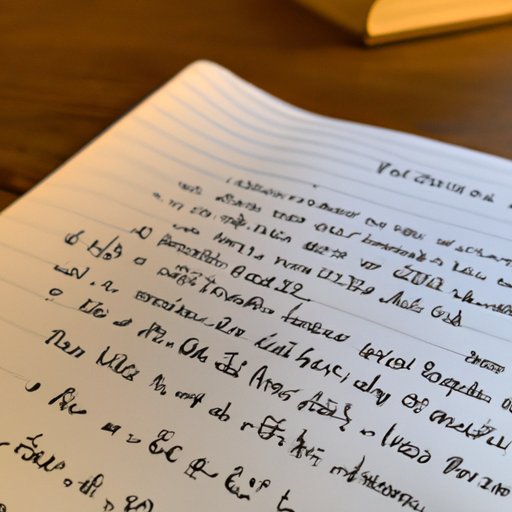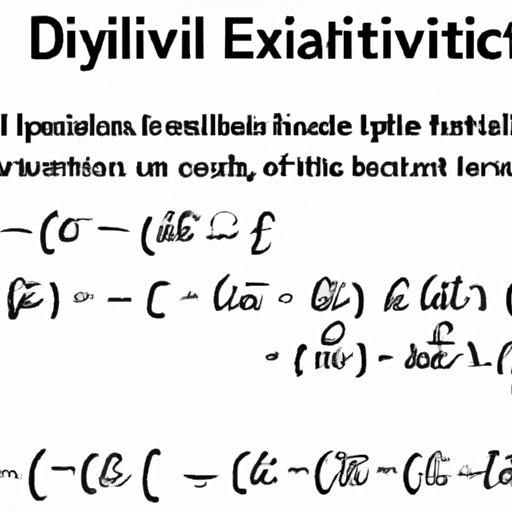Introduction
Calculus is a mathematical tool used for studying changes in functions over time. It is an essential part of modern mathematics, and its invention has had a profound impact on science and engineering. This article explores the history and development of calculus, examining the contributions of famous mathematicians such as Isaac Newton and Gottfried Leibniz, as well as the influential ideas that led to its invention, the mathematical principles involved, and the role of technology.

A Historical Analysis of the Development of Calculus
Calculus can be traced back to ancient Greece, although it was not developed into a full field until the 17th century. The concept of calculus began with early attempts to solve problems related to motion, area, and volume. Over time, these ideas were refined by successive generations of mathematicians, leading to the modern form of calculus.
Early Beginnings of Calculus
The earliest known reference to calculus is found in the writings of the ancient Greek philosopher Zeno of Elea, who proposed a paradox involving continuous motion. This paradox inspired later mathematicians to develop methods for solving problems associated with motion and change. In particular, the ancient Greeks developed the idea of infinitesimals, which are infinitely small quantities. These concepts would later become integral parts of calculus.
Contributions of Famous Mathematicians
In the 17th century, several prominent mathematicians made major contributions to the development of calculus. One of the most important figures was the English scientist Isaac Newton. He developed his own version of calculus, which he called “the method of fluxions”, and published his findings in 1687. Another influential mathematician was the German philosopher Gottfried Leibniz, who developed a different approach to calculus and published his work in 1684. Both of these men are credited with inventing calculus independently of each other.

Exploring the Contributions of Famous Mathematicians to the Invention of Calculus
Isaac Newton
Isaac Newton was one of the most influential scientists of all time. His work in calculus was based on the concept of infinitesimals, which he used to develop his famous laws of motion. He also developed the idea of a derivative, which is defined as the rate of change of a function at any given point. In addition, he formulated the generalized binomial theorem, which is still used today in calculus.
Gottfried Leibniz
Gottfried Leibniz was another influential figure in the development of calculus. He developed a new approach to calculus based on the concept of the integral, which is the opposite of the derivative. He also developed the fundamental theorem of calculus, which states that the integral of a function is equal to the area under its graph. In addition, he developed the notation for calculus, which is still used today.
Other Important Contributors
Other important contributors to the development of calculus include the French mathematician Pierre de Fermat, who developed the concept of the maxima and minima of a function; the Swiss mathematician Leonhard Euler, who developed the theory of integration; and the Italian mathematician Joseph-Louis Lagrange, who developed the theory of differential equations.

Examining the Influential Ideas Behind the Invention of Calculus
Calculus as a Tool for Solving Complex Problems
At the time of its invention, calculus was seen as a powerful tool for solving complex problems in mathematics, physics, astronomy, and engineering. This was due to its ability to describe the behavior of functions over time, as well as its ability to calculate the area under curves and the volume of solids. As a result, calculus quickly became popular among scientists and engineers.
Use of Calculus in Physics, Astronomy, and Engineering
Calculus has been used extensively in the fields of physics, astronomy, and engineering. For example, it has been used to analyze the motion of planets, predict the trajectory of a rocket, and calculate the forces acting on a bridge. In addition, it has been used to model the behavior of fluids, calculate the volume of a gas, and study the properties of materials. By using calculus, scientists and engineers have been able to make significant advances in their respective fields.
An Overview of the Mathematical Principles Involved in the Invention of Calculus
Derivatives
A derivative is a mathematical expression that describes the rate of change of a function at any given point. Derivatives are used to measure how quickly a function is changing, and they can be used to calculate the slope of a curve or the velocity of an object. Derivatives are one of the most important tools in calculus, and they are used extensively in physics, astronomy, and engineering.
Integrals
An integral is a mathematical expression that describes the area under a curve. Integrals are used to calculate the area between two points on a curve, as well as the volume of a solid. They are also used to calculate the average value of a function over a period of time. Like derivatives, integrals are an essential part of calculus, and they are used extensively in physics, astronomy, and engineering.
Limits
Limits are used to describe how a function behaves as its arguments approach a certain value. Limits are used to calculate the values of derivatives and integrals, as well as to determine whether a function is continuous or discontinuous. Limits are an important part of calculus, and they are used extensively in physics, astronomy, and engineering.
Differential Equations
Differential equations are equations that involve derivatives. They are used to describe the behavior of a function over time, and they can be used to calculate the velocity and acceleration of objects. Differential equations are an essential part of calculus, and they are used extensively in physics, astronomy, and engineering.
Investigating the Role of Technology in the Creation of Calculus
Developments in Mathematics
The invention of calculus was aided by developments in mathematics, particularly the invention of analytical geometry by René Descartes and the discovery of the fundamental theorem of algebra by Carl Friedrich Gauss. These mathematical breakthroughs enabled mathematicians to develop new techniques for solving complex problems, which ultimately led to the invention of calculus.
Impact of Computers and Other Technologies
The invention of computers and other advanced technologies has had a significant impact on the development of calculus. Computers have allowed mathematicians to solve complex problems more quickly and efficiently, making calculus more accessible and useful. In addition, computer-aided design (CAD) tools have enabled engineers to use calculus to design more efficient structures and machines.
Conclusion
Calculus is an essential part of modern mathematics, and its invention has had a profound impact on science and engineering. This article has explored the history and development of calculus, examining the contributions of famous mathematicians such as Isaac Newton and Gottfried Leibniz, as well as the influential ideas that led to its invention, the mathematical principles involved, and the role of technology. Today, calculus continues to be an invaluable tool for solving complex problems in a variety of fields.
Summary of Key Points
Calculus is a mathematical tool used for studying changes in functions over time. It was invented in the 17th century by mathematicians such as Isaac Newton and Gottfried Leibniz, who developed their own versions of calculus independently of each other. The invention of calculus was aided by developments in mathematics, such as the invention of analytical geometry and the discovery of the fundamental theorem of algebra. Computers and other advanced technologies have also had a significant impact on the development of calculus.
Relevance of Calculus Today
Today, calculus remains an invaluable tool for solving complex problems in a variety of fields, including physics, astronomy, and engineering. Its ability to describe the behavior of functions over time, calculate the area under curves and the volume of solids, and model the behavior of fluids makes it one of the most important tools in modern mathematics.
(Note: Is this article not meeting your expectations? Do you have knowledge or insights to share? Unlock new opportunities and expand your reach by joining our authors team. Click Registration to join us and share your expertise with our readers.)
